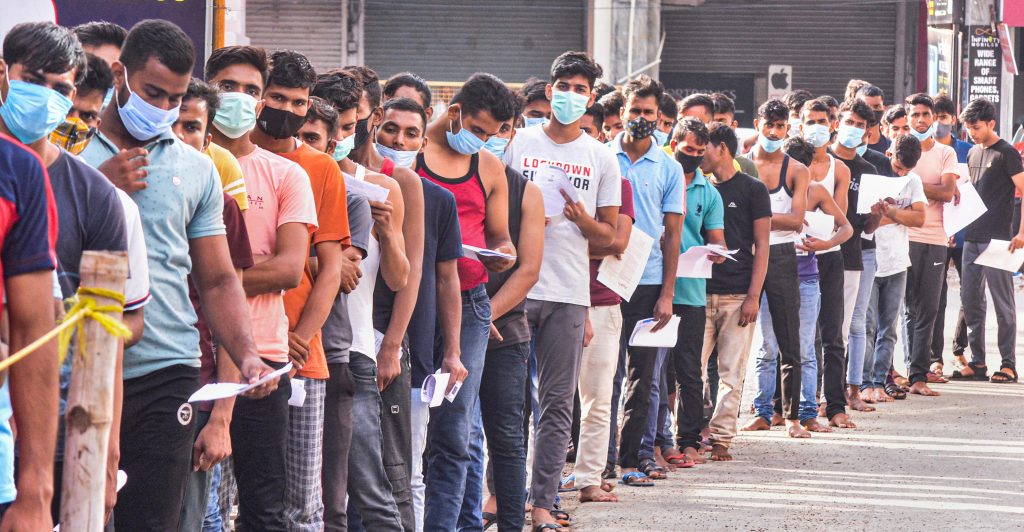
The newly released India Employment Report 2024 is the third in a series prepared by the Institute for Human Development in partnership with the International Labour Organization (ILO). The report examines the employment challenges of youth in the context of India’s evolving economic, labour market, educational, and skills scenarios over the past two decades.
There have been “paradoxical improvements” in labour market indicators in India in recent years after long-term deterioration from 2000-2019, coinciding with periods of economic distress. Following are the key concerns:
1-Reversal of the slow transition to non-farm employment.
2- Increase in self-employment and unpaid family work, especially for women.
3 – Lower quality youth employment compared to adults.
4 – Stagnant or declining wages and earnings.
The unemployment rates: The unemployment rate fell between 2019-2022 after rising from 2000-2019. Bihar, Odisha, Jharkhand, and UP have remained at the bottom of the ’employment condition index’, while Delhi, Himachal Pradesh, Telangana, Uttarakhand, and Gujarat have stayed at the top.
In India the quality of the employment are describes as: Informal employment has risen, with around half of formal sector jobs being informal in nature. Self-employment remains the primary source of work at 55.8% in 2022, up from ~52% in 2000-2019. Regular employment, associated with better job quality, declined to 21.5% in 2022 after increasing to 23.8% in 2019 from 14.2% in 2000. Casual employment, linked to poorer job quality, fell to 22.7% in 2022 from 33.3% in 2000.
Female labour force : India’s female labour force participation rate (LFPR) remains among the world’s lowest at 32.8% in 2022, 2.3 times lower than men’s. Female LFPR declined 14.4 percentage points from 2000-2019 but rose 8.3 points from 2019-2022. India’s female LFPR in 2022 was lower than the global average of 47.3% but higher than South Asia’s 24.8%
Reports from different sectors: The share of agriculture in total employment fell from 60% in 2000 to ~42% in 2019, largely absorbed by construction and services. This slow transition has stagnated or reversed since 2018-19. Manufacturing’s share of employment has remained around 12-14%
Educated youth unemployment : Unemployment is much higher among educated youth. Youth employment and underemployment rose from 2000-2019 but fell during the pandemic. Unemployment is much higher among educated youth, especially graduates. The unemployment rate for secondary educated youth was 18.4% in 2022 vs 3.4% for those who cannot read or write. Graduate unemployment was 29.1% overall, 34.5% for women and 26.4% for men. Educated youth unemployment rose from 23.9% in 2000 to 30.8% in 2019 before falling to 18.4% in 2022.
